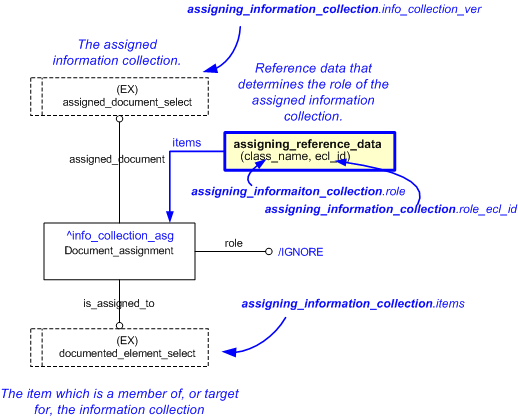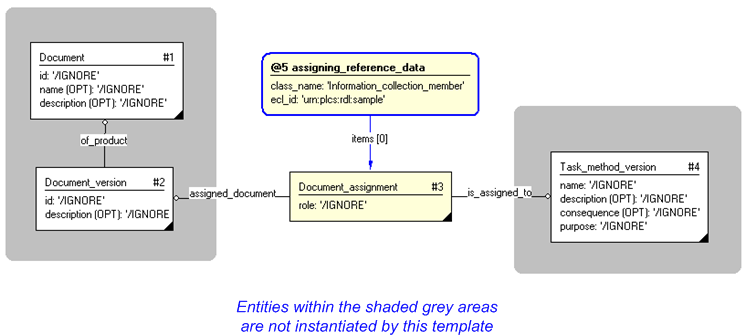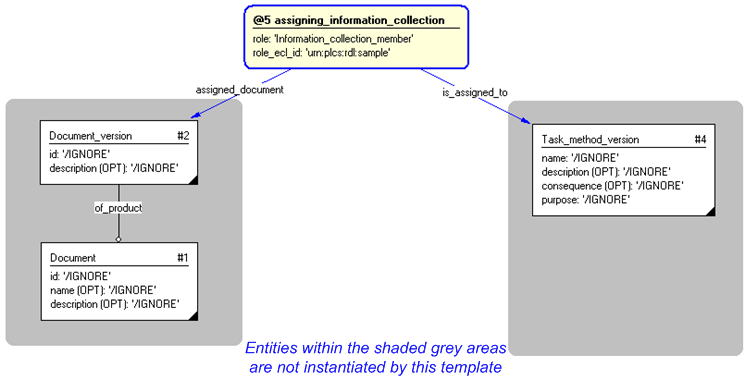Template:— assigning_information_collection (asg_info_cltn)
Capability:representing_project_information |
Date: 2010/01/28 16:42:55
Revision: 1.1
|
This section specifies the template assigning_information_collection.
NOTE
The template has been defined in the context of the capability
representing_project_information
which provides an overall description of the
relevant parts of the ISO 10303-239 information model and a description
of related templates.
NOTE
An explanation of a template and the associated instantiation path is
provided in the
Template overview
section.
This template describes how to represent the assignment of an information collection,
either to a member of the information collection, or to the object for which the information collection is defined.
The EXPRESS-G diagram in
Figure
1
shows the templates and EXPRESS entities that are required
to represent the template
"assigning_information_collection".
The text highlighted in blue shows the template parameters.
Figure 1 — An EXPRESS-G representation of the Information model for assigning_information_collection
The graphic for the template to be used in other EXPRESS-G diagrams
is shown in Figure
2
below.
Figure 2 — The graphical representation of the assigning_information_collection template
The following input parameters are defined for this template:
The information collection
which is assigned to either its members or its target object.
The target of the assignment, i.e. the entity instance that is either a member or the target for the information collection.
The name of the
External_class
used to determine the the role of the assignment.
The following classes and their sub-classes can be used:
The following reference parameters are defined for this template:
Allow the
Document_assignment
entity instantiated in this path to be referenced when this template is used.
%^target = $assigning_information_collection.info_collection_asg%
The following parameter combinations specify a uniqueness constraint:
Unique constraint: Information_collection_assignment
The instantiation path shown below specifies the entities that are to be
instantiated by the template.
A description of templates and the syntax for the instantiation path is
provided in the
Templates Help/Information section.
The following entities are instantiated with attributes as specified:
The instance diagram in Figure
3
shows an example of the EXPRESS entities and templates that are instantiated by the template:
/assigning_information_collection(info_collection_ver='#2', items='#4', role='Information_collection_member', role_ecl_id='urn:plcs:rdl:sample')/
(an illustration of the consolidated assigning_information_collection template is shown in
Figure
4 below.)
Figure 3 — Entities instantiated by assigning_information_collection template
The instance diagram in
Figure
4
shows the graphic symbol for the template that is to be
used in other instance diagrams. The example template is:
/assigning_information_collection(info_collection_ver='#2', items='#4', role='Information_collection_member', role_ecl_id='urn:plcs:rdl:sample')/
Figure 4 — Instantiation of assigning_information_collection template
Characterizations
No common characterizations of the template
assigning_information_collection
have been identified. However, the ISO 10303-239 EXPRESS model
may enable other assignments to the entities instantiated by the template.




